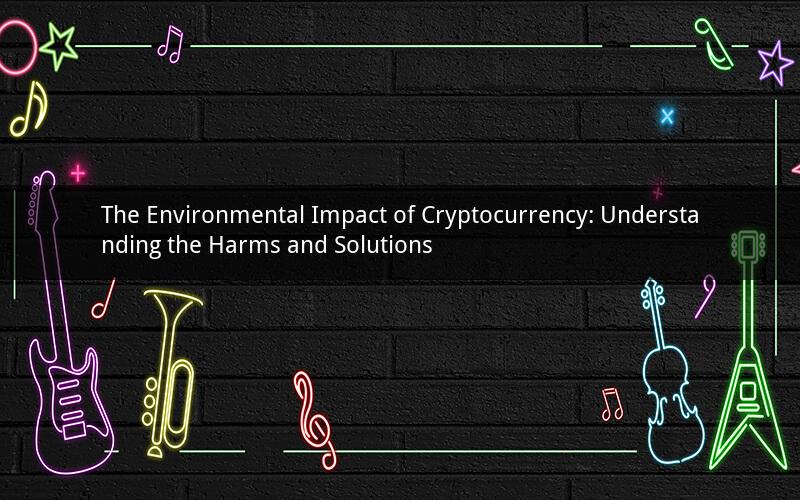
Introduction:
Cryptocurrency has become a revolutionary financial technology that has gained significant popularity over the years. However, as the crypto industry grows, so does its environmental impact. This article explores how cryptocurrency can harm the environment and examines possible solutions to mitigate its negative effects.
1. The Problem of Mining:
The process of mining cryptocurrencies, such as Bitcoin, relies heavily on computational power, which is achieved through specialized hardware known as ASICs (Application-Specific Integrated Circuits). These ASICs consume massive amounts of electricity, leading to high energy consumption and greenhouse gas emissions.
2. Energy Consumption:
According to a study by the Cambridge Center for Alternative Finance, the energy consumption of the Bitcoin network alone is comparable to that of entire countries, such as Argentina. This massive energy consumption is mainly due to the Proof of Work (PoW) consensus mechanism, which requires miners to solve complex mathematical problems to validate transactions.
3. Greenhouse Gas Emissions:
The energy consumed by cryptocurrency mining leads to the emission of greenhouse gases, primarily carbon dioxide. These emissions contribute to climate change and exacerbate environmental degradation. In regions where electricity is generated from fossil fuels, the impact is even more significant.
4. Environmental Degradation:
Apart from energy consumption and greenhouse gas emissions, cryptocurrency mining also has direct environmental impacts. The extraction of rare metals, such as gold and silver, used in the manufacturing of ASICs can lead to habitat destruction, water pollution, and other environmental issues.
5. Solutions and Alternatives:
To mitigate the environmental harm caused by cryptocurrency, several solutions and alternatives can be considered:
a. Transition to Proof of Stake (PoS):
Proof of Stake is an alternative consensus mechanism that consumes significantly less energy than PoW. In PoS, validators are chosen to create new blocks based on the number of coins they hold and are willing to "stake" as collateral. This reduces the energy consumption associated with mining.
b. Renewable Energy Sources:
Investing in renewable energy sources, such as wind, solar, and hydroelectric power, can help reduce the environmental impact of cryptocurrency mining. By utilizing green energy, the carbon footprint of mining operations can be significantly reduced.
c. Regional Mining Hubs:
Creating regional mining hubs in areas with abundant renewable energy sources can further reduce the environmental impact. This approach would help distribute the mining load and promote the use of green energy.
6. Carbon Offsetting:
Carbon offsetting involves investing in projects that reduce greenhouse gas emissions. Cryptocurrency mining operations can offset their carbon emissions by supporting renewable energy projects, reforestation efforts, or other initiatives aimed at reducing environmental impact.
7. Regulatory Measures:
Governments and regulatory bodies can play a crucial role in addressing the environmental harm caused by cryptocurrency. Implementing regulations that promote energy-efficient mining practices and encourage the use of renewable energy can significantly reduce the industry's environmental impact.
Frequently Asked Questions:
1. How much energy is consumed by the entire cryptocurrency industry?
The energy consumption of the entire cryptocurrency industry varies, but it is estimated to be comparable to that of entire countries. The energy consumption of Bitcoin alone is similar to that of Argentina.
2. Can cryptocurrency mining be powered by renewable energy?
Yes, cryptocurrency mining can be powered by renewable energy sources. Investing in green energy and promoting the use of renewable energy in mining operations can significantly reduce the environmental impact.
3. What are the benefits of Proof of Stake over Proof of Work?
Proof of Stake consumes less energy and is more energy-efficient compared to Proof of Work. It eliminates the need for specialized hardware and reduces the overall energy consumption associated with mining.
4. Can carbon offsetting completely eliminate the environmental harm caused by cryptocurrency?
Carbon offsetting can significantly reduce the environmental impact of cryptocurrency, but it cannot completely eliminate it. A comprehensive approach, including energy-efficient practices and renewable energy, is required.
5. How can governments and regulatory bodies address the environmental harm caused by cryptocurrency?
Governments and regulatory bodies can implement regulations that promote energy-efficient mining practices, encourage the use of renewable energy, and provide incentives for sustainable mining operations. Collaborating with the industry to develop environmentally friendly solutions is also crucial.